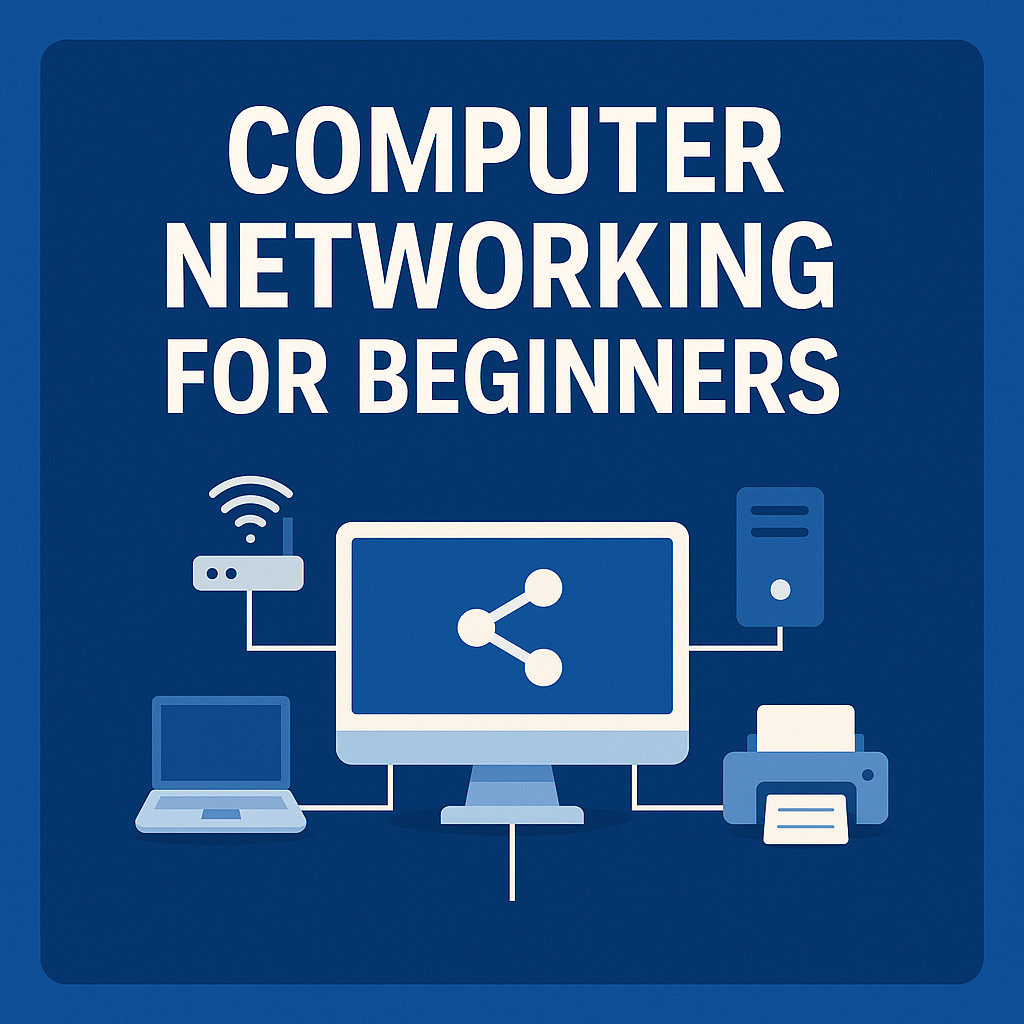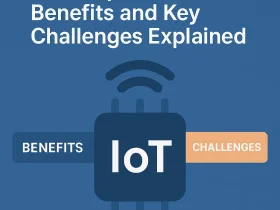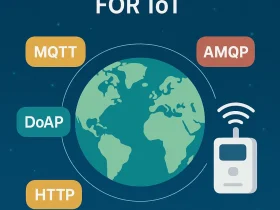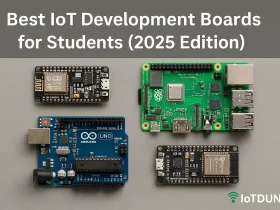Computer Networking for Beginners: The Complete Step-by-Step Guide
Introduction: Why Should You Learn Networking?
Have you ever connected to Wi-Fi, sent an email, joined a Zoom call, or streamed your favorite show on Netflix? If so, you’ve used a computer network. In our digital era, networks are essential to almost everything we do—whether it’s browsing the internet, sharing files, using cloud services, or running smart homes and businesses.
Understanding computer networking helps you grasp how data moves, how systems communicate, and how to troubleshoot problems when things go wrong. Whether you’re a student, aspiring IT professional, or simply curious, this guide is your first step into the exciting world of computer networking.
What is a Computer Network?
A computer network is a system that connects multiple computers, devices, and systems so they can communicate and share resources. These networks can be physical, using cables and switches, or wireless, using radio signals and Wi-Fi.
Each connected device is referred to as a node, and every node on the network has a unique IP (Internet Protocol) address—a digital identifier that helps it send and receive data correctly.
For example, your laptop, smartphone, smart TV, and printer can all be part of your home network. When you send a print command from your phone, the data travels through your network to the printer.
How Do Devices Identify Each Other?
Devices use IP addresses (e.g., 192.168.1.1) to identify and locate each other on a network. Since these addresses can be difficult for humans to remember, we use domain names like www.iotdunia.com, which are translated into IP addresses by the Domain Name System (DNS).
Key Benefits of Computer Networking
Why is networking such a game-changer in the tech world? Here’s what makes it essential:
Efficient Communication
Enables instant messaging, video conferencing, and email.
Supports collaborative platforms like Google Drive, Microsoft Teams, and Zoom.
Resource Sharing
Allows multiple users to access the same printer, files, or internet connection.
Saves money by reducing hardware redundancy.
Centralized Data Access
All files and applications can be stored in one location (server/cloud) and accessed by authorized users.
Scalability
Easily add or remove devices without disrupting the entire system.
Remote Access
Access your work files or manage systems from anywhere in the world using VPNs or cloud services.
Cost Efficiency
Reduces operational costs by enabling centralized management, cloud computing, and shared internet connections.
Types of Computer Networks
Networks are classified based on their size, range, and purpose:
1. Local Area Network (LAN)
Limited to a small area like a house, school, or office.
High speed, low cost, easy to manage.
Example: Your home Wi-Fi network.
2. Wide Area Network (WAN)
Covers large areas such as cities or countries.
The internet is the largest example of a WAN.
Uses telephone lines, fiber optics, or satellite communication.
3. Metropolitan Area Network (MAN)
Spans a city or campus.
Connects multiple LANs within a geographical area.
Often used by governments and universities.
4. Wireless Local Area Network (WLAN)
A LAN using wireless technology (Wi-Fi).
Devices connect without physical cables.
Ideal for mobile access and modern workspaces.
5. Personal Area Network (PAN)
Short-range network used for personal devices.
Example: Bluetooth connection between your smartphone and headphones.
Core Networking Components
Let’s take a deeper look at the three essential hardware components in networking:
1. Switches: The Internal Communicator
Connects multiple devices within a LAN.
Directs data packets only to the intended recipient.
Helps avoid data collisions and increases network efficiency.
Real-life Example: Think of a switch as a traffic police officer at a junction ensuring that vehicles (data packets) go to the right destination without crashing.
Types of Switches:
Unmanaged Switch: Plug-and-play. No configuration needed.
Managed Switch: Allows configuration and monitoring. Used in enterprise networks.
2. Routers: The Data Dispatcher
Connects different networks together.
Routes data from your LAN to the internet.
Assigns IP addresses and manages traffic between devices.
Real-life Example: A router is like a GPS that finds the best route for your data to reach its destination.
Key Features:
Built-in firewall for security.
Supports VPNs for secure remote access.
DHCP server to assign IP addresses.
3. Access Points: The Wireless Expander
Connects Wi-Fi devices to a wired network.
Expands wireless coverage.
Supports more devices and improves signal strength.
Real-life Example: Think of an access point as a Wi-Fi booster in a large house ensuring every room has a strong signal.
How Data Travels Through a Network
You initiate a request (like opening a website).
The request is broken into small packets.
Packets travel through the switch to the router.
The router determines the best path to the destination.
If needed, the access point helps transmit packets wirelessly.
At the destination, packets are reassembled and delivered.
This happens in milliseconds—thanks to protocols that standardize how data moves.
Basic Network Security
Every network needs protection from threats like hackers, malware, or unauthorized access.
Common Security Measures:
Firewalls: Block unauthorized access.
Antivirus Software: Detects and removes threats.
Encryption: Protects data during transmission.
VPNs (Virtual Private Networks): Secure access to private networks over public internet.
Tips for Beginners:
Change default router passwords.
Enable network encryption (WPA3 or WPA2).
Regularly update firmware and software.
Real-Life Applications of Networking
| Industry | Use of Networking |
|---|---|
| Education | Online classes, digital libraries, virtual labs |
| Healthcare | Patient records, telemedicine, connected medical devices |
| Business | Email servers, file sharing, cloud computing |
| Banking | Secure transactions, ATM networks, mobile banking |
| Home Automation | Smart TVs, voice assistants, connected lighting systems |
Summary: Key Devices and Their Functions
| Device | Function |
|---|---|
| Switch | Connects devices in a local network |
| Router | Routes data between networks and to the internet |
| Access Point | Enables wireless connectivity |
Conclusion
Understanding the fundamentals of computer networking is like learning the blueprint of our digital world. From simple tasks like browsing the web to managing enterprise systems, networks play a critical role. Once you understand how switches, routers, and access points work—and how different network types operate—you’ll be well-prepared to dive deeper into topics like IoT, cybersecurity, and cloud computing.
Start building your foundation today, and unlock the power of connection.
See also: How to Use IoT Device Over Internet: A Beginner’s Guide
Get Involved
Share your thoughts: Have questions or feedback on Computer Networking for Beginners? Drop them in the comments.
Watch & Learn: Subscribe to IoTDunia on YouTube for beginner-friendly tutorials.
Got a story or product to share? Submit a guest post on IoTDunia.










Leave a Review